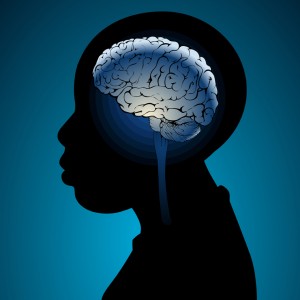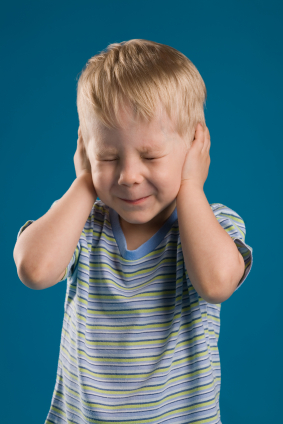Young Rats That Witness Maternal Abuse Show Depression-Like Behavior in Adulthood
Rodents that are subjected to social defeat (being overpowered by a bigger, more aggressive animal) develop a syndrome that resembles human depression—they avoid social interaction, lose interest in sucrose, and do less exploring of new places or other animals. A recent finding showed that even witnessing the social defeat of a peer was enough to bring about the depressive behaviors. The same researchers, led by Samina Salim, recently found that young rats (aged 21–27 days) that witnessed their mother go through the trauma of social defeat showed depression-like behavior themselves as adults (at age 60 days).
The rats saw their mothers defeated by the larger rat every day for seven days. As adults, those who witnessed this abuse exhibited depression-like behavior compared to rats of the same age and gender that had not witnessed abuse. The depressive rats gave up more quickly on a test of forced swimming. Male rats showed great depression-like behavior than female rats.
It has been estimated by the American Psychological Association that 15.5 million children in the US witness physical or emotional abuse of a parent (usually their mother). Children who witness domestic violence often show symptoms of post-traumatic stress disorder (PTSD). This rodent research may lead to a better understanding of the consequences of witnessing trauma in childhood, and potential treatments that could help.
Editor’s Note: These data show that rats have something like empathy, and that the psychological aspects of stress (including verbal abuse in humans and witnessing another’s abuse in rodents) may have profound and lasting consequences on behavior.
Maternal Childhood Adversity Associated with Low Infant Birth Weight
In a study of the effect on infant health of a mother’s experience of adversity in childhood by researcher Deborah Kim and colleagues, both adversity in childhood (such as physical abuse or the loss of a parent) and stress during pregnancy were associated with low infant birth weight and lower gestational age at birth.
Among 146 women enrolled in the study, 58.2% percent scored a 0 on the Adverse Childhood Experience Questionnaire (ACE), 24% scored a 1, and 17.8% scored a 2. Those who scored higher on the ACE also scored higher on a scale measuring perceived stress. A score of 2 or higher on the ACE was associated with lower gestational age at birth, indicating infants born prematurely. Greater stress during pregnancy was associated with lower gestational age at birth and lower infant birth weight. When potential confounding demographic factors were removed from the analyses, ACE scores of 2 or higher were still associated with lower infant birth weight, while perceived stress was no longer associated with either low birth weight or gestational age.
Childhood adversity is associated with increases in inflammation and multiple adverse medical consequences in adults. The researchers called childhood adversity a “significant predictor of poor delivery outcomes” for women.
Editor’s Note: This research shows that a mother’s health and earlier life stressors could have an adverse effect on her child.
Childhood adversity leaves behind a residue of neuroendocrine and neuroclinical alterations that can persist into adulthood. Many are mediated by epigenetic changes, consisting of small chemical marks that attach to DNA and the histones around which it is wrapped.
In addition to these neurobiological alterations mediated by epigenetic effects, there is new evidence that some epigenetic marks can be passed on to the next generation via a mother’s egg or a father’s sperm. Thus, either directly or indirectly, parents’ adverse life experiences can influence the health of their offspring.
Childhood Adversity Associated with Shorter Telomeres
 Telomeres sit at the end of DNA strands and shorten with each cell replication. Shorter telomeres are associated with aging and an increase in multiple medical and psychiatric disorders. New research draws connections between the production of mitochondrial DNA, telomere length, the experience of childhood adversity, and mental illness.
Telomeres sit at the end of DNA strands and shorten with each cell replication. Shorter telomeres are associated with aging and an increase in multiple medical and psychiatric disorders. New research draws connections between the production of mitochondrial DNA, telomere length, the experience of childhood adversity, and mental illness.
Researcher Audrey Tyrka and colleagues divided 290 healthy adults into four categories based on whether or not they had experienced adversity in childhood and whether they had been diagnosed with a mental illness in their lifetime, including depression, anxiety, and substance abuse. The researchers also analyzed the participants’ telomere lengths and the copy number of their mitochondrial DNA. Both stressful events in childhood (such as maltreatment or the loss of a parent) and a history of mental illnesses (depression and anxiety) were associated with shorter telomeres and higher mitochondrial DNA copy numbers, a measure of cellular aging. Substance abuse was associated with higher mitochondrial DNA copy numbers.
Editor’s Note: This research replicates earlier findings that adversity is associated with shortening telomeres. The finding that mitochondrial DNA could play a role in the long-term effects of early life adversity and mental illnesses is new.
Childhood Maltreatment Leads to Inflammation and Depression in Adulthood
Researcher Andrea Danese discussed the influence of childhood maltreatment on inflammation in a symposium at the 2014 meeting of the American Academy of Child and Adolescent Psychiatry. Danese indicated that inflammation is part of the normal immune system, which includes the blood brain barrier, recognition of self- versus non-self proteins, activation of cytokines and endothelial cells, and response by phagocytes and acute phase proteins. In an acute phase inflammatory response, the liver secretes proteins including c-reactive protein (CRP) and fibrinogen into the blood, where their levels can be measured.
Normal amounts of inflammation can be protective, while excessive or persistent inflammation can be damaging and pathological. The inflammatory cytokines interferon gamma and tumor necrosis factor (TNF alpha) induce an enzyme called indoleamine oxidase (IDO) that shunts the amino acid tryptophan away from its normal path, which yields serotonin, so that it instead yields kynurenine and then kynurenic acid, which inhibits the action of glutamate at NMDA receptors. Kynurenine can also be hydroxylated and turned into quinolinic acid, which activates glutamate NMDA receptors and causes toxicity.
In addition, inflammatory cytokines such as interleukin six (Il-6) can cross the blood brain barrier and directly influence neurotransmission. Meta-analyses have shown that inflammatory markers CRP, IL-6, IL-1, and IL-1 Ra all increase significantly in depression. A direct demonstration of the relationship between inflammation and depression is the finding that when hepatitis C is treated using the inflammatory treatment interferon gamma, there is about a 30% incidence of depression, which responds to the antidepressant paroxetine.
Stress can also increase the activity of the sympathetic nervous system, driving inflammation, and decrease parasympathetic activity, resulting in further inflammation. In addition, glucocorticoid receptor resistance can develop, enhancing depression, and increasing inflammation. Thus there are multiple ways inflammation can develop.
Danese described a study from New Zealand in which 1000 participants were observed over several decades—from childhood through age 38. The small percentage of participants who experienced maltreatment as children (aged three to eleven) showed a linear increase in CRP in adulthood as a function of their histories of previous child maltreatment. The maltreatment included parental rejection in 14%, sexual abuse in 12%, harsh discipline in 10%, changing caretakers in 6%, and physical abuse in 4%. Childhood maltreatment was also associated with some unfortunate outcomes in adulthood, including lower socioeconomic status, more major depression, more persistent depression, more cardiovascular risk, and more smoking. In other studies, Danese found that compared with controls, patients with depression alone, and patients with maltreatment alone, a greater number of patients with both depression and maltreatment (about 30%) had elevated CRP.
Danese noted that in a study by Ford et al. (2004), recurrent depressions, but not single depressions, were also significantly associated with increased CRP. In a meta-analysis by Nanni et al. in the American Journal of Psychiatry in 2012, Danese and colleagues found that across multiple studies, childhood maltreatment was associated with a twofold increase in the incidence of depression and a twofold increase in the persistence of depression (chronic depression or treatment resistance). The traditional optimal treatment for depression, combined psychotherapy and pharmacotherapy, was also significantly less effective in those with histories of childhood maltreatment. However, psychotherapy alone was equally effective in those with and without childhood maltreatment.
Together these data suggest that childhood maltreatment, partly through an inflammatory pathway, results in multiple difficulties in adulthood, including depression and treatment resistance. These data speak to the importance of attempting to prevent maltreatment in the first place, and ameliorating its consequences should it occur.
Editor’s Note: In a 2014 article in the Journal of Nervous and Mental Disorders, this editor Robert Post and colleagues reported that childhood adversity (verbal, physical, or sexual abuse) is associated with increases in medical comorbidities in adult patients with bipolar illness, and it is likely that inflammation could play a role in some of these medical conditions.
Childhood adversity, epigenetics, and hippocampal volume
At the 2014 meeting of the International College of Neuropsychopharmacology, researcher Booij reported that in humans, there is an interaction between adversity experienced during childhood, and an epigenetic variation in the short form of the serotonin transporter (5HT-T ss, or SLC6A4), which can influence hippocampal volume during depression.
Epigenetics refers to environmental influences on the way genes are transcribed. The impact of life experiences such as stress is not registered in DNA sequences, but can influence the structure of DNA or tightness of its packaging. Early life experiences, particularly psychosocial stress, can lead to the accumulation of methyl groups on DNA (a process called methylation), which generally constricts DNA’s ability to start transcription (turning on) of genes and the synthesis of the proteins the genes encode. DNA is tightly wound around proteins called histones, which can also be methylated or acetylated based on events in the environment. When histones are acetylated, meaning that acetyl groups are attached to them, DNA is wound around them more loosely, facilitating gene transcription (i.e. the reading out of the DNA code into messenger RNA, which then arranges amino acids in order to construct proteins). Conversely, histone methylation usually tightens the winding of DNA and represses transcription.
Booij followed 33 children who had experienced some form of adversity at a young age until they were 15 or 16, examining methylation of the serotonin transporter in their T cells and monocytes compared to 36 children who had not experienced adversity during childhood. He found that in children who had experienced abuse in childhood, the degree of that abuse was correlated with methylation of the serotonin transporter and was inversely related to the volume of the hippocampus, as measured using magnetic resonance imaging (MRI). Thus, child abuse yields lasting epigenetic effects (methylation of the serotonin transporter) and has anatomical consequences in teenagers, as seen in smaller hippocampi. These data parallel converse findings by Joan Luby et al. published in the journal PNAS in 2012, in which increased maternal warmth directed toward a child aged 4-7 was associated with increased volume of the hippocampus several years later.
Poverty Impacts Brain Development
 In a 2013 study of children by Luby et al. in the Journal of the American Medical Association Pediatrics, poverty in early childhood was associated with smaller white and gray matter in the cortex and with smaller volume of the amygdala and hippocampus when the children reached school age. The effects of poverty on hippocampal volume were mediated by whether the children experienced stressful life events and whether a caregiver was supportive or hostile.
In a 2013 study of children by Luby et al. in the Journal of the American Medical Association Pediatrics, poverty in early childhood was associated with smaller white and gray matter in the cortex and with smaller volume of the amygdala and hippocampus when the children reached school age. The effects of poverty on hippocampal volume were mediated by whether the children experienced stressful life events and whether a caregiver was supportive or hostile.
The children were recruited from primary care and day care settings between the ages of three and six, and were studied for five to ten years. They were initially assessed annually for three to six years and information on psychosocial, behavioral, and developmental dimensions were collected. Then the children took part in a magnetic resonance imaging (MRI) scan and continued annual assessments that included information such as whether the children experienced stressful life events.
Previous research has shown that poverty affects children’s psychosocial development and economic success in adulthood. This research shows that poverty also affects brain development. The findings suggest important targets for intervention that could help prevent these developmental deficits.
Emotional Abuse in Childhood is a Risk Factor for Bipolar Disorder
 Evidence is growing that stressful events in childhood are associated with an earlier onset of bipolar disorders and a more difficult course of illness than in those who did not experience this type of adversity. Monica Aas and colleagues in Norway have found for the first time that emotional abuse in childhood, especially before age five, also increases risk of bipolar disorder. This study indicates that while bipolar disorder has a genetic component, environmental factors also play a role.
Evidence is growing that stressful events in childhood are associated with an earlier onset of bipolar disorders and a more difficult course of illness than in those who did not experience this type of adversity. Monica Aas and colleagues in Norway have found for the first time that emotional abuse in childhood, especially before age five, also increases risk of bipolar disorder. This study indicates that while bipolar disorder has a genetic component, environmental factors also play a role.
In Norway and France, the research group surveyed patients with bipolar disorder and people in the general population about childhood trauma, including emotional abuse, sexual abuse, physical abuse, emotional neglect, and physical neglect. Among the almost 800 participants, patients with bipolar disorder were twice as likely as control participants to have experienced multiple types of trauma. However, emotional abuse was the only factor specifically linked to bipolar disorder. People who were emotionally abused in childhood were more than twice as likely to develop bipolar disorder in adulthood. Moreover, the more severe the emotional abuse, the more likely it was that a child would go on to develop bipolar disorder.
Among the adults with bipolar disorder, emotional abuse and sexual abuse in childhood predicted younger age of illness onset, more suicide attempts, more rapid cycling, and greater proneness to depression. Emotional or sexual abuse were linked to the most suicide attempts, and sexual abuse was linked to rapid cycling.
More trauma in childhood was also linked to affective instability in adults. Aas’ research was presented at the 14th International Congress on Schizophrenia Research.





